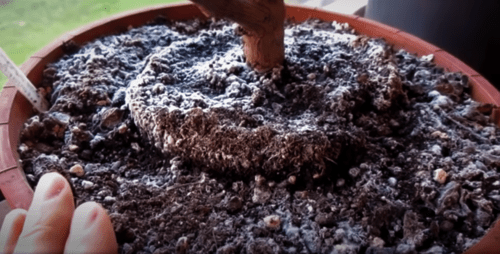White Mold on plant soil
Gardeners and plant lovers may be disturbed by the discovery of white mold on plant soil. If left untreated, it not only removes the visual appeal of your plants but also affects their general health. This extensive tutorial will examine the sources of white mold, its potential effects on plants, and practical solutions to this problem. You can safeguard the health of your plants and maintain your beautiful garden by understanding the nature of white mold and putting the appropriate preventive and remedial measures into place.
What is white Mold?
A fungus called Sclerotinia, occasionally referred to as white mould, commonly harms plants and their soil. Sclerotinia sclerotiorum is one of the kinds of fungi that cause it. The striking white colour of this fungus is caused by fluffy, cotton-like growth it forms on the soil’s surface. Because the mould prefers moist, damp surroundings, it is particularly prevalent in places with inadequate air circulation or high moisture levels.

Causes of White Mold on plant soil
White mould growth on plant soil results from a number of sources. Understanding these causes will make it easier for you to take preventative action. These are a few typical triggers:
1.Overwatering
Mould can grow more easily in environments with too much watering. White mould thrives in conditions where soil is continually wet because of the surplus moisture it receives. It’s crucial to establish a balance between giving your plants the right amount of water and avoiding overwatering.
2.Lack of Drainage
Overwatering is made worse by inadequate drainage. Water builds up and saturates the root zone when it cannot freely drain through the soil. This persistent moisture promotes the development of white mold and other fungi-related disorders. Make sure your plants are potted in draining pots and that the soil mixes you use is suitable for letting excess water out.
- Extreme Humidity
White mold grows and spreads more readily in environments with high relative humidity. White mold infestation is likely increased in areas or during seasons with naturally humid climates and enclosed spaces without enough ventilation. To increase air circulation around your plants, monitor the humidity levels and consider using dehumidifiers or fans.
Contaminated Soil or Infected Plants
White mold can also be introduced to your garden through contaminated soil or infected plants. Fungal spores can persist in soil, plant debris, or even on gardening tools. Introducing new plants without proper inspection and quarantine can potentially introduce white mold to your garden. It is essential to use clean and sterilized gardening equipment, as well as purchase plants from reputable sources.
Potential Effects of White Mold on Plants
Your plants’ health and energy may suffer as a result of white mould. Some possible effects include:
- Root rot
Plant roots are frequently infected by white mould, which causes root rot. The fungus invades the roots, causing rot and preventing the plant from absorbing nutrients and water. The plant may therefore show signs of wilting, reduced growth, and yellowing or browning of the leaves. - Damage to Stem and Leaves
White mould can infect plant stems and leaves as it grows. Lesions or soft areas on infected stems may form, eventually causing the stems to fall over. Besides changing colour, leaves might sometimes get patches or lesions and look wilted or mushy. - Reduced Yield and Flowering
Severe white mold infestations can significantly impact the productivity of fruit-bearing plants or flowering plants. The disease can hinder the normal development of flowers and fruits, leading to reduced yields or deformed produce.
White Mould on Plant Soil: How to Manage It
Although totally getting rid of white mould can be difficult, being proactive can help manage its effects and stop its spread. The following are some efficient methods for fighting white mould:
Enhance Air Circulation
Increasing airflow around your plants is essential for halting the spread of white mould. Make sure that plants are not overcrowded and trim any foliage that is dense that prevents airflow. This promotes the evaporation of extra moisture and prevents the conditions that favour the growth of mould.
Change Watering Procedures
- In order to prevent overwatering, carefully monitor and modify your watering strategies. To promote strong root growth and prevent fungal growth, water your plants thoroughly but less regularly. In between waterings, let the soil’s top layer somewhat dry out.
Boost Drainage
- Make sure that the pots you use for your plants have enough drainage holes. Use a soil mixture that drains properly and permits easy water passage. The drainage qualities of the soil may also be enhanced by adding organic matter, such as compost or perlite.
- Work on crop rotation.
Crop rotation is a technique that can help lower the danger of recurring white mold if you cultivate plants in the ground. Do not repeatedly plant sensitive plants in the same spot as this could lead to the spread of mould spores. - Get Rid of Infested Plant Material
Any infected plant material, including leaves, stems, or entire plants, should be promptly removed. This reduces the spore source and stops the growth of white mould. By placing the infected material in a bag and tossing it in the trash, you can ensure proper disposal.
Antifungal Therapies
- Fungicidal treatments may be required in extreme circumstances to control white mould. To find the right fungicides for your particular plants, get advice from a nearby garden centre or agricultural extension office and carefully follow the directions. Always give organic and environmentally friendly products a top priority.
